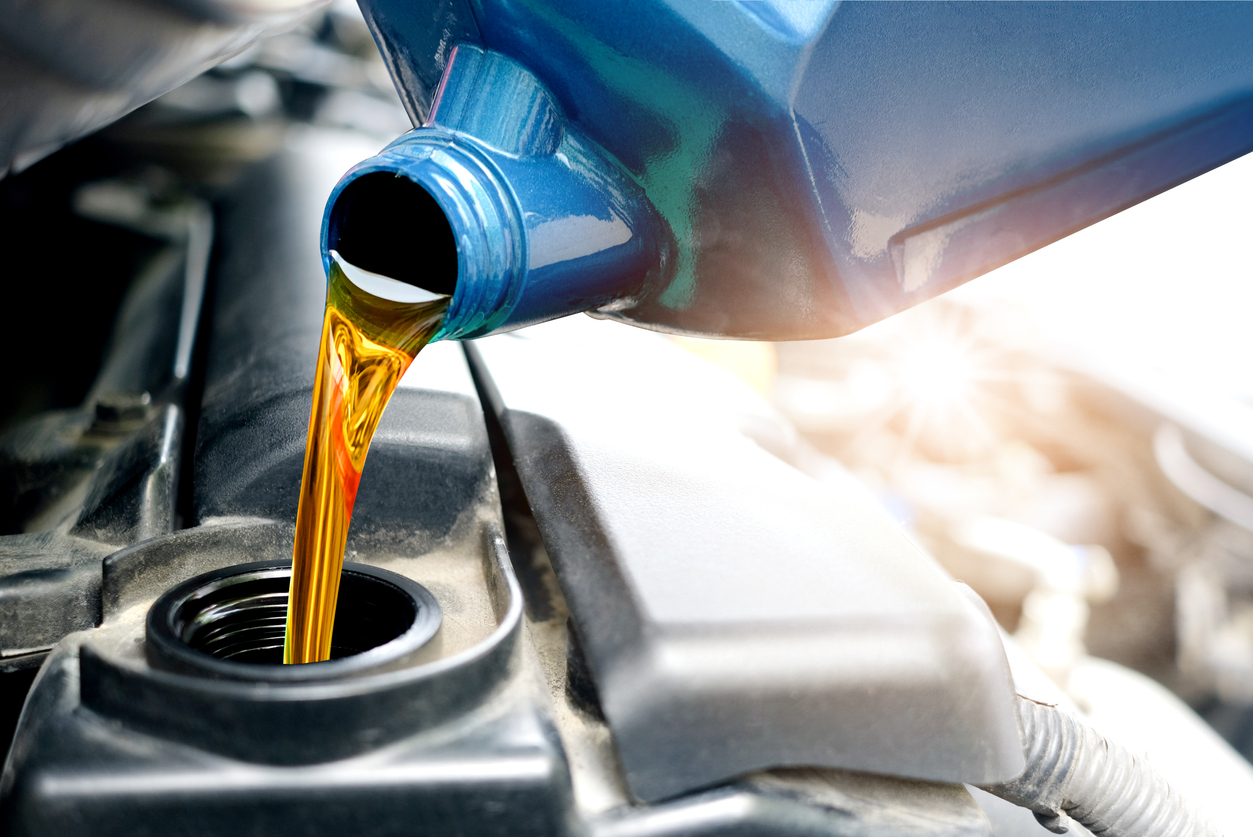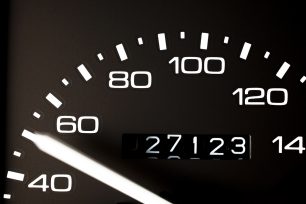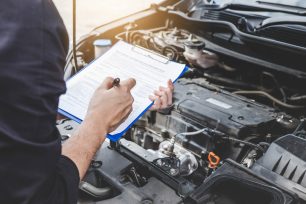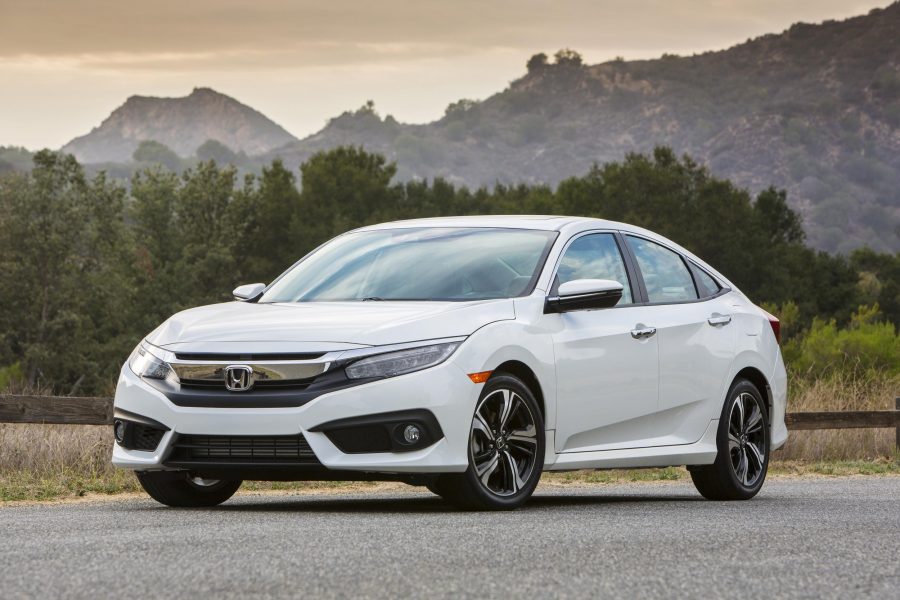New and used car prices are at record highs. One way to save money on buying a new (or new-to-you) car is to prolong the life of your existing vehicle. Or, if you plan to sell your vehicle, proper car maintenance will increase its resale value. Routine oil changes are a no-brainer, but there are additional routine maintenance measures that can easily be overlooked. That’s why we compiled this handy list of basic car maintenance tips that can improve the quality and reliability of your car and save you money in the long run.
Here are 10 simple things that can have long-term effects on your car’s reliability. While this isn't a comprehensive list, it highlights some of the most overlooked car maintenance items that can help cut down on unnecessary car repair expenses and keep your car running smoothly.
1. Wash Your Car Regularly
 While it’s tempting to just rely on nature’s car wash, regular rain showers shouldn’t be your preferred method of washing your car. Unwashed dirt can lead to scratches or chips and can even fade your car’s color. Regular exposure to the elements, especially salt in winter, can also damage a vehicle’s paint and lead to damaging rust on your car’s undercarriage.
While it’s tempting to just rely on nature’s car wash, regular rain showers shouldn’t be your preferred method of washing your car. Unwashed dirt can lead to scratches or chips and can even fade your car’s color. Regular exposure to the elements, especially salt in winter, can also damage a vehicle’s paint and lead to damaging rust on your car’s undercarriage.
2. Check Your Battery
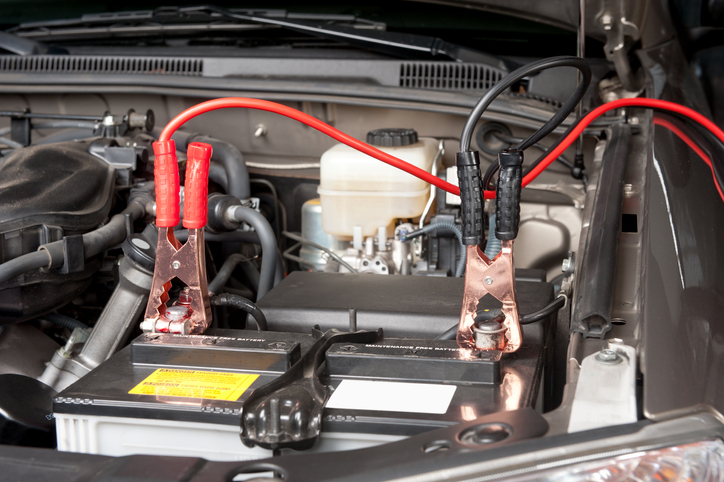
A car battery lasts an average of two to five years. You can prolong the life of your battery by following some basic maintenance tips. You should check your battery annually and keep an eye out for warning signs that indicate your battery is nearing the end of its lifespan. These include dim headlights and a car that is slow to start or won’t start at all. You can test your car’s voltage with a voltage meter that can be found at automotive parts stores or online. A battery that registers at 12.39 volts or less is considered discharged.
You can revive your vehicle by giving it a jump start if you left your lights on, but having to regularly jump your battery is a sign it needs to be left on a battery charger for at least 24 hours. If after that your battery still won’t reliably start your vehicle, you likely need a replacement, though a test of your car’s charging system should also be performed. This can be done at almost any automotive shop for a minimal cost (less than $40).
You should also check your car battery's terminals to make sure the connections are clean and free of debris buildup. Also make sure the wires from the connectors are tight and without frays or breaks.
3. Replace Your Air Filters
Air is drawn into your vehicle through its intake, where it’s filtered and directed to the engine’s combustion chambers. If anything interrupts this flow of air, the engine will sputter or stall.
Most cars have at least one particulate filter for the air that is being sent into the engine for combustion. That engine air filter requires regular cleaning or replacement. Replacement is nearly always the better option. Rarely does a “lifetime” filter actually last the life of the car. Most air filters require replacement about every two oil changes, depending on the climate, contamination, and air quality where you live. Filters are cheap enough that more frequent changes are better.
Other filters that are important to your vehicle’s operation are fuel and oil filters. Use only quality filters or insist that only quality (preferably OEM) filters be used. Your owner’s manual will have specific intervals for oil and fuel filter replacements. Follow these manufacturer’s recommendations rigidly.
4. Check Fluid Levels Regularly

The fluids in your vehicle include engine oil, windshield washer fluid, grease, brake fluid, power steering fluid, and likely transmission fluid. Some engines may have other fluids as well, such as diesel exhaust after-treatment.
All of these fluids have some way to access their fill level, so you’ll know how much is in there. Most also have a way to determine how clean the fluid is. Motor oil and transmission fluid are accessed with dipsticks located inside the engine compartment. Those sticks should be marked with “hot” and “cold” indicators to show where levels should be if the engine is hot (at operating temperature) or cold. These should be checked regularly. Failure to maintain your car’s oil can void your warranty and lead to premature engine failure.
Windshield washer fluid is held in a reservoir that is usually visibly accessible from under the hood. Fill levels are generally assessed by looking at the filler spout or reservoir and viewing the fluid seen through the semi-opaque container. It’s difficult to over-fill this reservoir, so when in doubt, add more fluid.
Brake fluid is easily accessible from underneath the hood as well. The reservoir is usually located directly on top of the brake master cylinder, which is almost always on the firewall (back wall of the engine compartment) directly in front of the driver. Do not open this reservoir unless you are adding fluid. If you are low on brake fluid, there's a reason it’s dropping and that reason needs to be found and resolved immediately. Your brakes are your car’s primary safety item. Never neglect them.
Radiator coolant should also be checked regularly to make sure your level of coolant reaches the maximum fill line. This is important because your car can overheat if it doesn’t have enough coolant. Your radiator and coolant reservoir can be found under your car’s hood, and it is usually in a small transparent tank.
Grease is a different matter. Most of the time there's no easy to way to access grease points on your car. Some of them may even require partial disassembly of parts to access. Pay attention to your owner’s manual and its recommendation for greasing components on your vehicle. Then stick to those intervals. A large number of failures to mechanical components on a car are due to a lack of lubrication.
5. Check Your Wheels and Tires
 Tire pressure directly affects tread life, safety, and fuel economy. Yet few people remember to check their tires' pressure regularly. Some newer cars now have tire pressure sensors built into them, which display the tire pressure on the dashboard and provide a warning when it’s low.
Tire pressure directly affects tread life, safety, and fuel economy. Yet few people remember to check their tires' pressure regularly. Some newer cars now have tire pressure sensors built into them, which display the tire pressure on the dashboard and provide a warning when it’s low.
For the rest of us, checking tire pressures at every fuel fill or on a weekly routine requires more diligence. But it should be done. Look at the sticker located inside your driver’s door for the recommended air pressure, which will usually fall between 32 and 35 psi on most passenger vehicles. Tires that aren’t properly inflated can lower your gas mileage, lead to increased wear, or even lead to a tire blowout and potential crash.
Tread wear is another important factor. The less tread you have, the less grip your tires will provide, especially during quick maneuvers or hard stops during inclement weather. Tire tread depth should be well above the indicator bars built into the tread. When your tires begin to get close, get them replaced. Refer to our guide to understand the dangers of bald tires and to see if your tires have adequate tread.
Finally, the wheels on which those tires are mounted should also get routine inspections. Your regular tire rotation schedule is generally every other oil change or every 5,000 to 6,000 miles. (Check your owner’s manual.) It's a great time to have your wheels inspected. Cracks, big dents, etc. should be noted and are cause for concern. Replace them as necessary.
You should also make sure you have a spare tire handy and that it’s properly inflated.
6. Check Your Windshield Wipers
Did you know that windshield wiper blades should be replaced every six to 12 months? If you didn’t, chances are that you should probably change your wiper blades. If you hear a screech when your windshield wipers are activated, or if they leave streaks on your windshield, then it’s time for replacement blades. Properly maintaining your windshield wipers will help ensure that you have maximum visibility in the event of a snow or rainstorm. Wiper blades can be purchased at an auto parts store.
7. Check Your Brakes

Properly maintaining your brakes can help keep you safe while also prolonging the life of your vehicle. You can determine if it’s time to have your brakes checked by listening for telltale signs and by completing a visual inspection.
Be sure to listen for these common brake sounds that can indicate when maintenance is needed.
- Scraping - This happens when brake pads are worn out and are rubbing against the rotor.
- Rattling - This suggests that one of the rotors needs to be replaced.
- Vibrating- A vibrating noise at the brake pedal is another indicator your brakes require maintenance.
8. Examine Belts and Hoses
This goes beyond routine vehicle maintenance, but inspecting the hoses and belts in the engine bay can help prevent engine damage. Check hoses to see if they have separated or if they show signs of wear like cracking or bulging. If any of those conditions are present, they need to be replaced.
Follow the same process for the belts in your vehicle. Your car’s serpentine belt is one of the most important parts of your car and assists with the timing of many important car parts, like the air conditioning condenser, alternator, water pump, and power steering.
Older models may use multiple belts to run engine accessories, and these are typically made of rubber that will wear over time. If any of these belts show signs of wear like cracking, glazing, or if pieces are missing, it needs to be replaced.
One critical belt you can’t easily inspect is the timing belt, which controls the engine’s valvetrain. A recommended timing belt replacement interval will be listed in the owner’s manual, and it should be followed closely to avoid potentially very costly engine damage.
9. Don’t Neglect Your Check Engine Light

There are many reasons for your Check Engine Light to make its unwelcome appearance. To diagnose what’s triggering your check engine light, you can retrieve the codes by using an OBD-II scanner. This can be done by a mechanic, or you can purchase a code reader from an auto parts store. Even if you use your own code reader to see what may be causing the problem, you should still get the problem diagnosed by a professional. Ignoring a check engine light can lead to more costly repairs down the road and can also present a safety hazard.
10. Read Your Owner’s Manual
You don’t have to read it cover to cover, but at the very least you should keep it handy and refer to it often. Your owner’s manual will provide you with a maintenance schedule that will let you know when parts of your vehicle need to be serviced.
Bottom Line
Car maintenance is an important part of vehicle ownership. While regular maintenance may seem expensive, it’s far more cost-effective than the costly repairs you’re likely to incur if you don’t follow these easy steps.
More from iSeeCars.com:
If you’re interested in a new or used car, be sure to check out iSeeCars’ award-winning car search engine . It uses advanced algorithms to help shoppers find the best car deals and provides key insights and valuable automotive resources, like the iSeeCars free VIN check report and Best Cars rankings. Filter by price, fuel economy, drive type, and other parameters to find your next vehicle.
